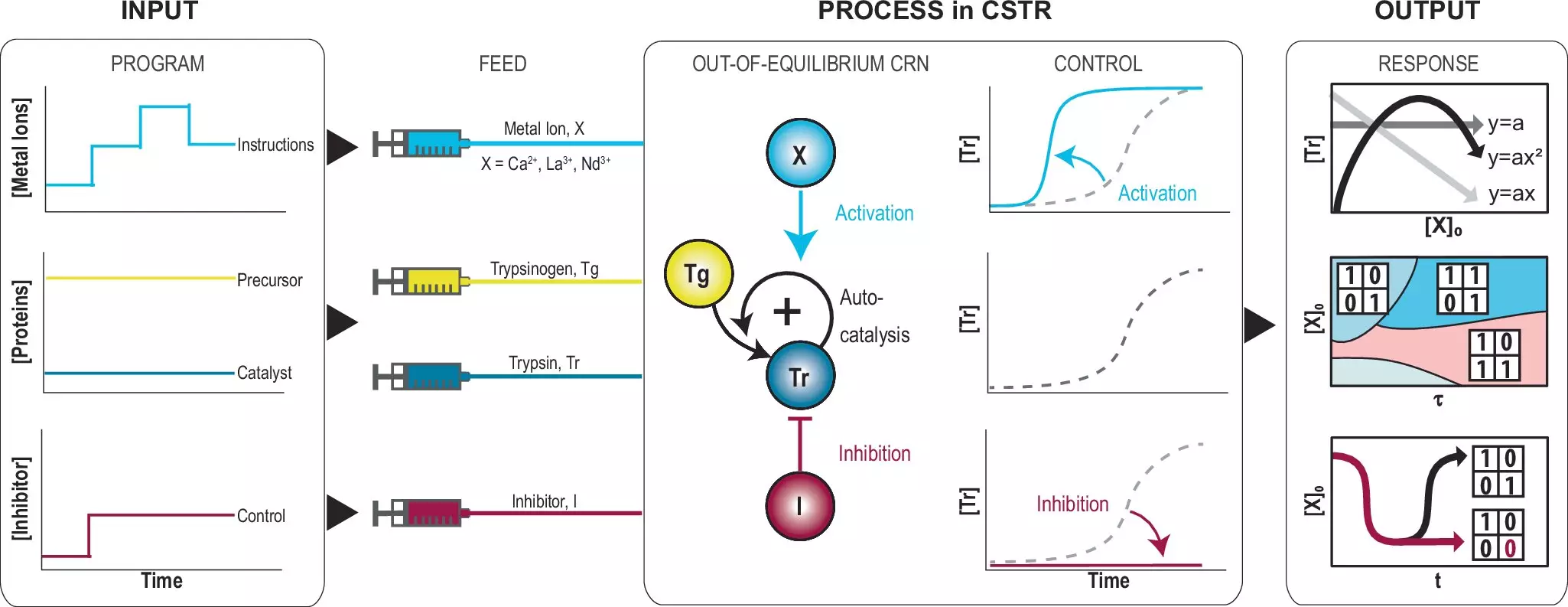In a remarkable advancement, scientists at the University of Twente have unveiled a novel technique for the precise control of chemical reactions through the use of metal ions. Published in the prestigious journal Nature Communications, this research signifies a monumental leap toward developing computers that emulate human brain functionality. The implications of this work extend far beyond the realm of computing; they touch on the very essence of biological information processing.
Living organisms exhibit the remarkable ability to adapt to environmental changes through intricate sequences of chemical reactions. This natural form of information processing is not only efficient but consumes significantly less energy than the operations of traditional digital computers. Researchers have long sought to mimic this biological prowess, seeking a pathway to replicate nature’s methods of data handling using molecular systems. The study from the University of Twente marks a significant milestone in this quest, showcasing the capability to imitate complex mathematical operations through the manipulation of metal ions.
Among the noteworthy achievements of this research is the successful imitation of complex mathematical functions, covering a range of forms from linear equations to parabolas, as well as logical Boolean operations. These Boolean functions exhibit varying outputs contingent on their inputs, demonstrating a level of versatility akin to foundational computational logic. The ability to program these chemical reactions introduces an innovative paradigm, allowing them not only to react to immediate environmental stimuli but also to “remember” historical states. This memory-like capability could lay the groundwork for a new category of intelligent systems.
Memory and Autocatalytic Reactions
The researchers achieved control over autocatalytic reactions—self-accelerating chemical processes—through the strategic application of metal ions. They illustrated this concept by manipulating the conversion of trypsinogen into trypsin. By introducing a compound that inhibits this conversion, they crafted a system capable of existing in a dual state, thereby creating a rudimentary data storage capability. This critical finding not only highlights the potential for memory within chemical systems but also paves the way for devising networks that could lead to smart materials and advanced artificial intelligence applications.
Broader Applications and Future Implications
The potential ramifications of this research reach far and wide, touching on various scientific domains, including nanobiotechnology and the exploration of life’s chemical origins. The ability to program basic chemical networks turns the spotlight on future applications that may include environmentally adaptive materials or novel computing frameworks inspired by biological processes. As scientists delve deeper into the possibilities opened by this work, the convergence of chemistry and technology may yield revolutionary insights into both artificial intelligence and the nature of life itself. The study from the University of Twente marks an exciting intersection of disciplines that promises to redefine our understanding of information processing in the natural and artificial worlds.

